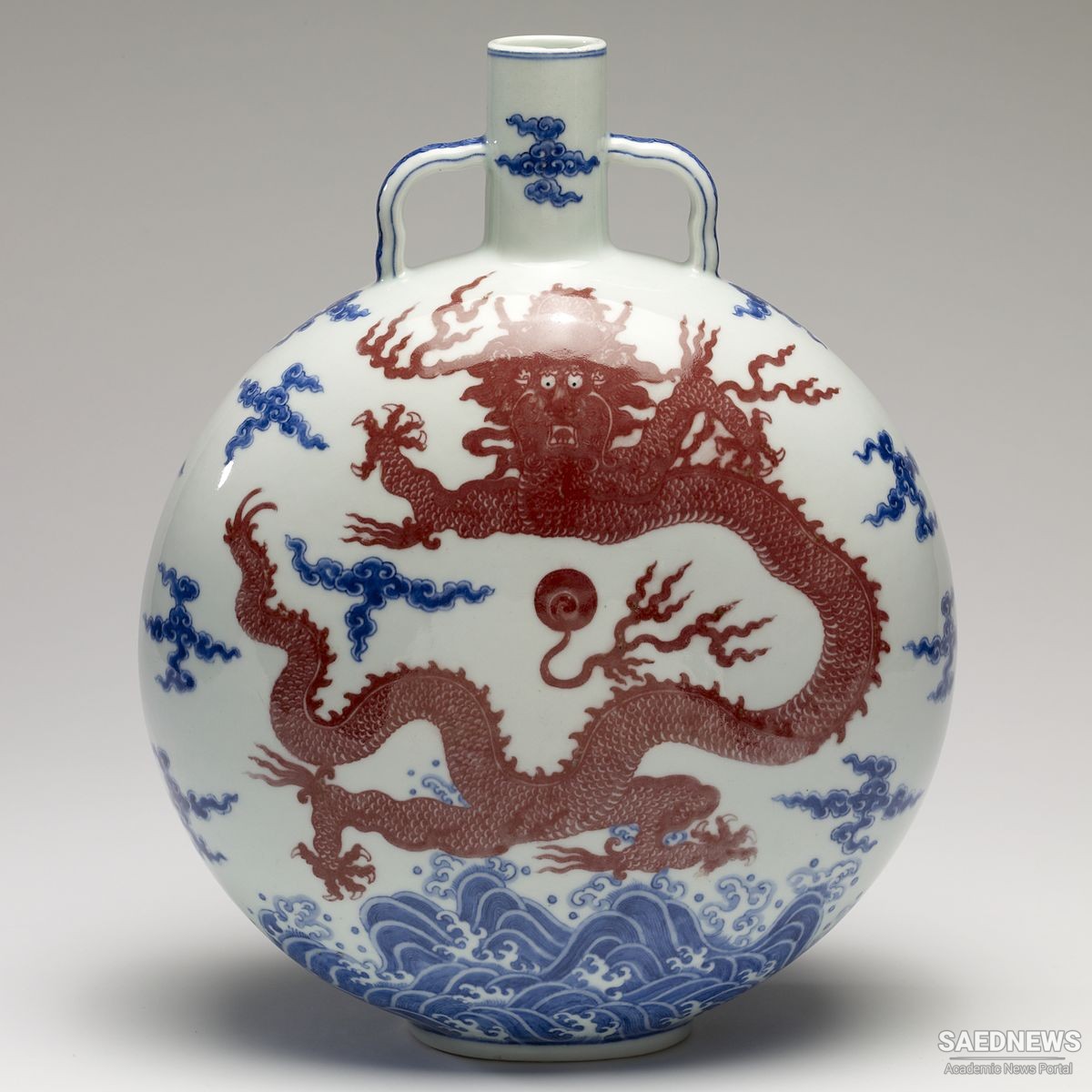But the first true porcelain, using china clay, was achieved by the German Johann Friedrich Böttger, who began working on the problem in 1701 in the royal laboratory of Friedrich August II, Elector of Saxony, in the town of Meissen. After ten years he came across kaolin, being sold as a wig powder, and feldspar, which often occurs with it. With these he obtained a true porcelain. By 1716 he had perfected the technique to such an extent that the products could be marketed. The Elector was anxious to keep the secret to himself and kept Böttger a virtual prisoner, but to no avail. The knowledge spread with the wares, and Meissen was soon to be overtaken by Sèvres. Originally at Vincennes, the French state factory moved to Sèvres in 1756. It always enjoyed royal patronage and by 1759, Louis XV had become proprietor. At first, soft paste substitutes were produced, but eventually, from 1768, under the superintendence of the chief chemist P.J. Macquer, a true hard porcelain was produced.
In England the pattern was repeated. A soft paste porcelain, using powdered glass with a white clay, was produced at factories established at Stratford-leBow in east London, in the late 1740s, followed by Chelsea, Derby, Lowestoft, Longton Hall in Staffordshire and Worcester. At the same time, William Cookworthy, the Plymouth chemist, had been experimenting with clays in Devon and Cornwall and in 1768 he felt sufficiently confident to take out a patent for the production of a true porcelain. His technical prowess was not, however, matched by business acumen and he disposed of the patent to Richard Champion. The latter found difficulty in renewing the patent in 1775 when it was successfully challenged by a group of Staffordshire potters including Josiah Wedgwood, who began to make hard paste porcelain from 1782 at New Hall, near Shelton.
Most of the factories mentioned above were not particularly well sited in relation to sources of raw materials and fuel. Those in north Staffordshire were much better in this respect and so it was here that the great industrial expansion of porcelain manufacture took place. The momentous changes that came about were largely the work of one of the greatest potters of all time, Josiah Wedgwood. One major change was the substitution of a white-burning clay and calcined crushed flint (silica) to give a ware that was white through the whole body in place of the common and buff clays. The preparation of the raw materials, including the crushing of the flint, required mechanical power, first supplied by water power, then by steam. Wedgwood had seen a Newcomen engine at work when visiting clay sites in Cornwall and he was the first potter to order an engine for his works from Boulton and Watt (see p. 276). Wedgwood evolved a ware consisting of four parts ground flint and 20 to 24 of finest white clay, glazed with virtually flint glass. Having secured royal patronage, it became known as Queen’s Ware and was widely used for all kinds of table ware.
Wedgwood pioneered the application of steam power in the pottery industry in 1782. As elsewhere, this changed the pattern and scale of operations and led to the factory system with a central source of power for a variety of mechanical operations. Wedgwood’s Etruria works were the first on these lines. But he was also concerned to apply the scientific knowledge of the time to materials and processes, as with his clay pyrometric cones which contracted on heating, enabling the temperature in the kilns to be more accurately measured and therefore more effectively controlled. By 1787 there were some 200 master potters, employing 20,000 in north Staffordshire, making it the foremost pottery manufacturing area in the world. A new product was introduced by Josiah Spode: bone ash and feldspar with white clay to produce that characteristically English ware, bone china. As the Industrial Revolution gathered pace, there was an increasing demand for porcelain or similar ware, otherwise called ‘china ware’, and two inventions, both originating in the mid-eighteenth century, helped to meet it. One was mould forming, in place of the traditional potter’s wheel, while the other was transfer printing instead of decorating each piece freehand. A compromise here was to transfer only a faint outline of the design on to the piece, leaving the craftsman to paint in the detail. This method was practised from the 1830s especially at the Coalport works in Shropshire and the Rockingham works at Swinton in Yorkshire. Mass production methods and improved transport brought cheap china to most tables in the industrialized countries, although, as often but not necessarily happens, there was a decline in the quality of design. On the other hand, after the chemical revolution, a better understanding of the nature of the potter’s materials produced better bodies and glazes. This among other things ended the dependence on lead glazes, to the great benefit of the health of those who had to use this harmful material. New effects were produced, such as the celebrated Persian turquoise blue of J.T.Deck of Paris in 1861 (bleu de Deck). New colouring agents arrived, like uranium (1853), and new effects such as flame-mottling by controlling conditions in the kiln.


 Chemical Industry: POTTERY, CERAMICS, GLASS
Chemical Industry: POTTERY, CERAMICS, GLASS














































